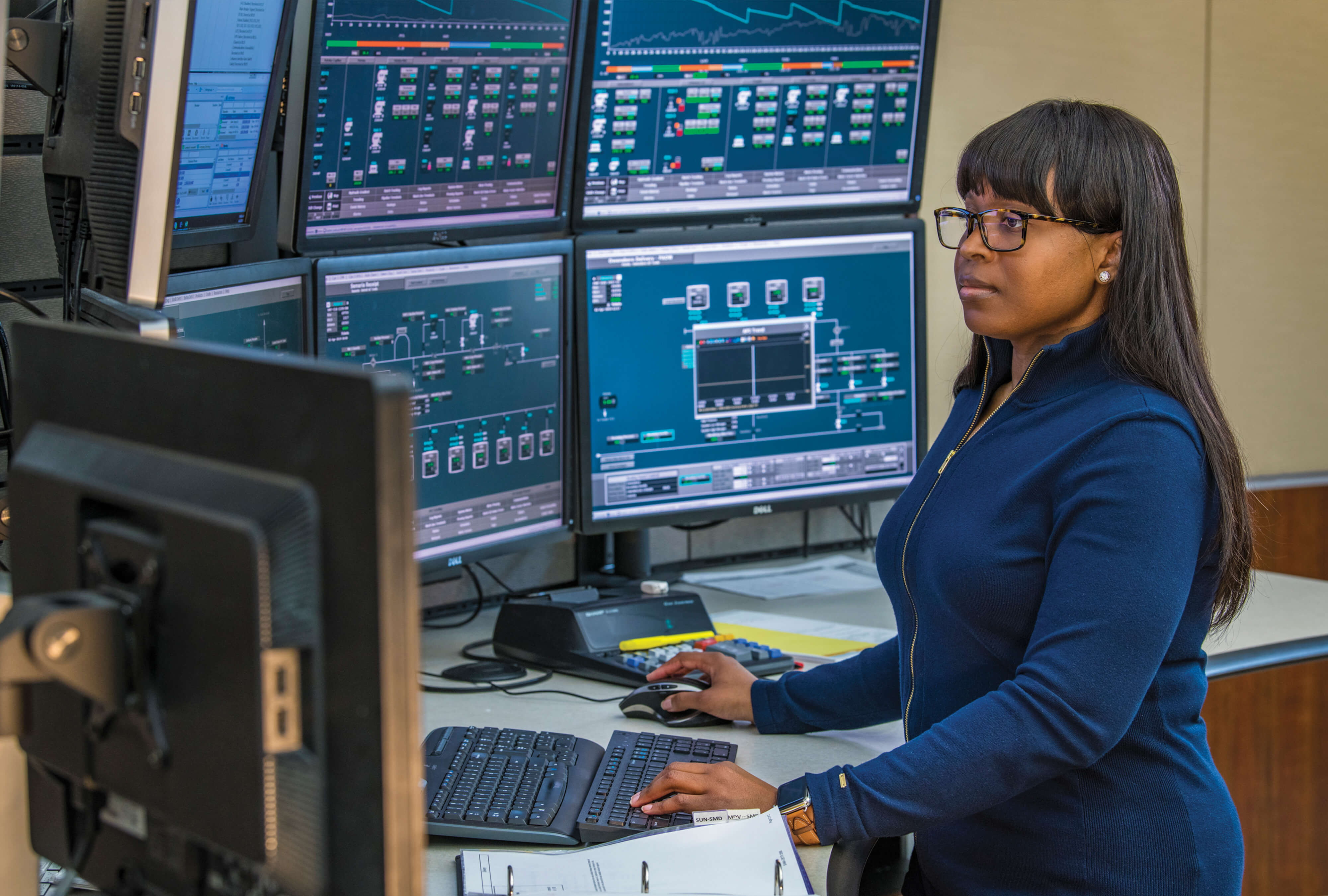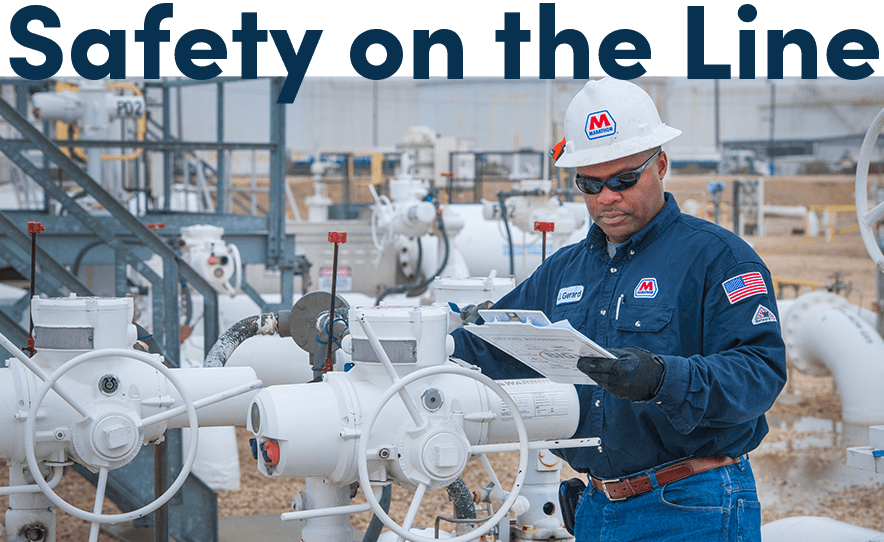Safety on the Line
If you were to look at a map of the pipelines running through the continental United States, you would see a transportation network of intrastate and interstate lines spreading throughout the country like a Jackson Pollock painting.
These pipelines transported approximately 28 trillion cubic feet of natural gas to roughly 75 million customers in 2018, according to the U.S. Energy Information Administration (EIA). With lines running through each of the 48 contiguous states, some cluster around heavily populated areas that host gas distribution or shipping facilities, such as ports in the Gulf of Mexico near New Orleans, Louisiana. But the roughly 3 million miles of mainline and other pipelines that course through the country often cross vast stretches of rural or remote areas, with workers working on locations far from the nearest services.
Surveillance of an organization’s pipes can be managed by a supervisory control and data acquisition (SCADA) system. Gas control personnel can be trained to properly supervise and control the infrastructure with the use of remote sensors along the pipeline, according to the Interstate Natural Gas Association of America (INGAA).

U.S. agencies like the Federal Energy Regulatory Commission and the U.S. Department of Transportation work with state pipeline safety regulators to ensure the safety of this infrastructure. But, when it comes to the employees of pipeline companies who work in the more remote areas, sometimes alone, most of the onus of establishing safety standards for these workers falls on employers, according to the U.S. Occupational Safety and Health Administration (OSHA).
Along Marathon Pipe Line LLC’s 10,000 miles of pipelines, some workers and contractors—such as right-of-way technicians and specialists—operate for long stretches of time in remote areas, requiring additional safety considerations.
Marathon, a pipeline subsidiary of MPLX LP, operates in 25 states in the Midwestern and Western regions of the United States, with roughly 700 of its 1,200 employees involved in field operations. Some of their tasks include conducting line surveys, line locating for third parties, excavation staking for first- and second-party projects, equipment repair, performing inspections, and more, according to Shawn Lyon, Marathon Pipe Line (MPL) president.
Although the company has always worked to ensure the safety of its employees and the public, Lyon says that a watershed moment for Marathon was on 10 June 1999, when a gasoline pipeline explosion ignited a four-mile stretch of a creek in Bellingham, Washington, killing one young adult and two 10-year old boys.

“This tragedy impacted the entire pipeline industry, and it left a deep impression on MPL’s leaders at the time,” he says.
“Our pipelines run near parks, schools, hospitals, and nursing homes,” Lyon says, meaning that their network could affect roughly 26,000 landowners. “This impact alone makes safety a priority for us, but Bellingham was the pivotal moment when we realized we truly have a higher calling to be guardians of public safety.”
While involved with independent watchdog organization Pipeline Safety Trust, Lyon met with the stepfather of one of the victims, who emphasized how a culture of safety could have prevented the explosion. Lyon found himself agreeing with the need for making safety not just a priority but part of a company’s culture, ensuring that it would prevent future tragedies that could otherwise impact the company’s employees, contractors, customers, or others in their service areas.
In establishing and maintaining the company’s safety culture, Lyon notes that the dedication to this goal must lie across the entire company to succeed.
“Every MPL employee knows that protecting themselves, their fellow coworkers, and the public is their first responsibility,” Lyon says. “Nothing gets done unless it can be done safely.”

Not Alone
OSHA does not typically maintain a general standard for lone workers, with a few exceptions, specifically for emergency responders or for those working in permit-required confined spaces. Lone workers can pop up in a variety of industries, operating largely alone and without close or direct supervision.
Employers are encouraged to establish and implement emergency procedures for remote or lone workers, such as providing them with a wireless electronic notification device and/or a cell phone, according to an OSHA spokesperson.
Marathon’s safety training programs—which include driving safety, job-specific training, and now pandemic-specific measures—help employees avoid unsafe situations. The company also has a lone-worker safety program that relies on monitoring technology and check-in protocols.
Marathon maintains an internal reporting system that is always available, even to remote and lone workers, in case of major or minor incidents. Employees can call their supervisor from a company-issued mobile device in case a security or safety issue arises, but Lyon says there are other opportunities to sound an alarm, creating a network of fail safes.
Lone workers can also check in with a pipeline operations center. The analysts at these centers initiate calls to and receive updates from lone workers at designated times.

Marathon also relies on Vehicle Location and Navigation (VLN), which identifies real-time coordinates of a lone worker’s automobile and is equipped with crash monitoring detection connected to the company’s global security operations center (GSOC) and local emergency responders. This allows supervisors to initiate an emergency call even if the lone worker cannot. Even if an employee has not updated an operations center on his or her status, local supervisors can still access the VLN data.
Both employers and contractors are trained on reporting and routing the incident through the system. System operators follow up on incidents by contacting the appropriate stakeholders and connecting them with each other so a situation can be immediately addressed.
Continuous learning is also considered a priority for the company, supporting the goal of maintaining employee and infrastructure safety.
“To me, a premier learner embraces failure and commits to never forgetting, not just in our lifetime, but forever,” Lyon says.
Sara Mosqueda is assistant editor at Security Management. Connect with her at [email protected]. Follow her on Twitter: @ximenawrites.
